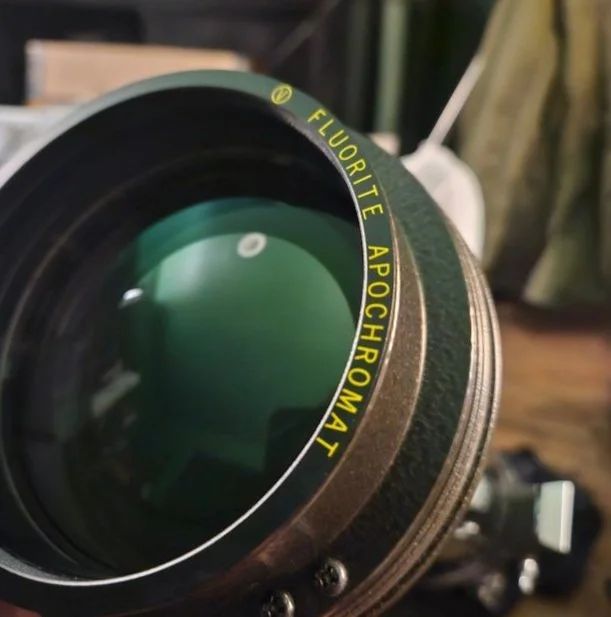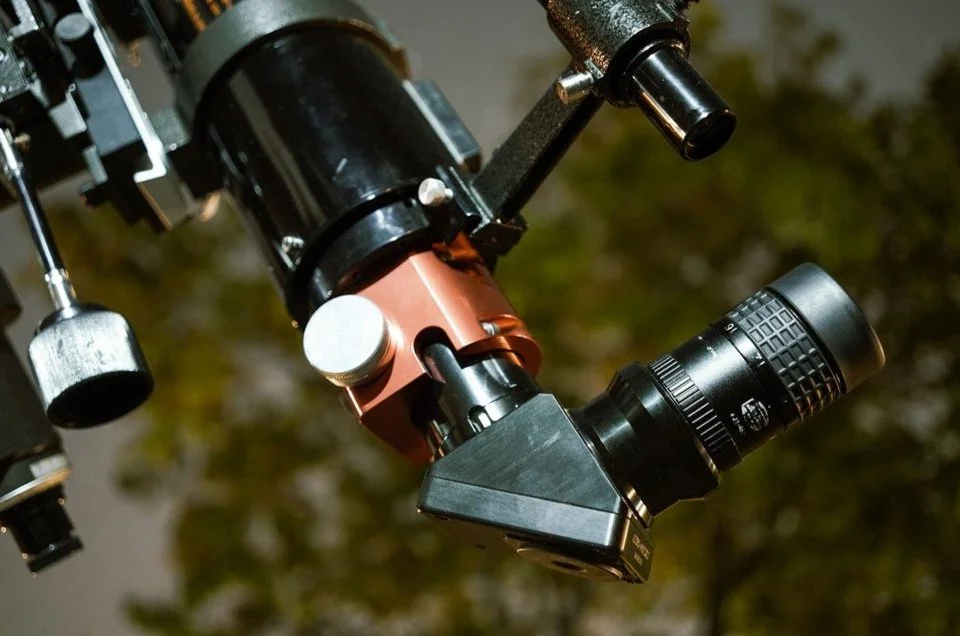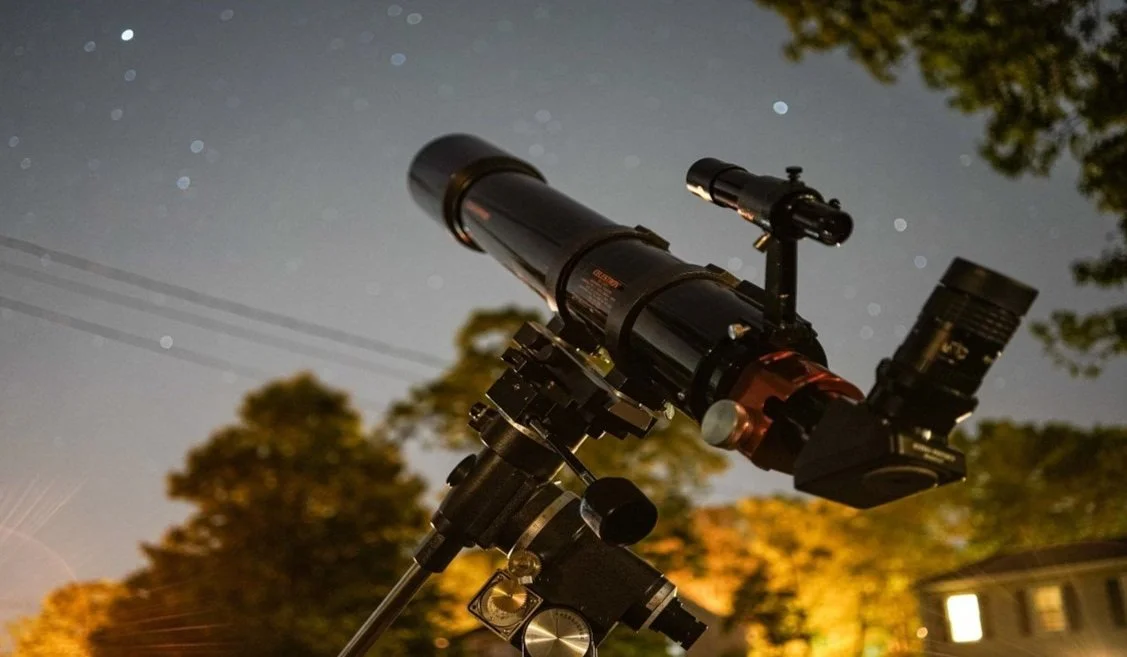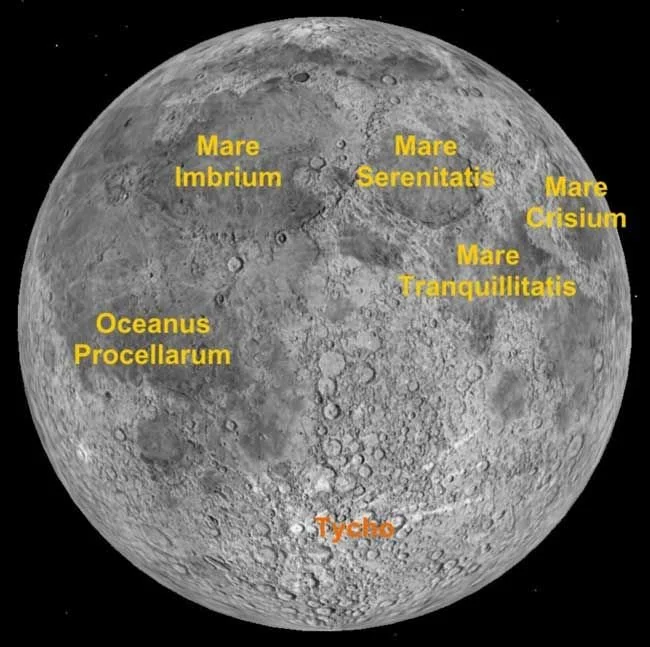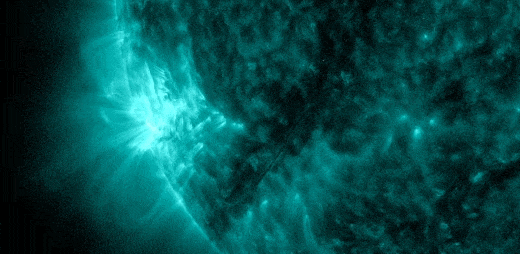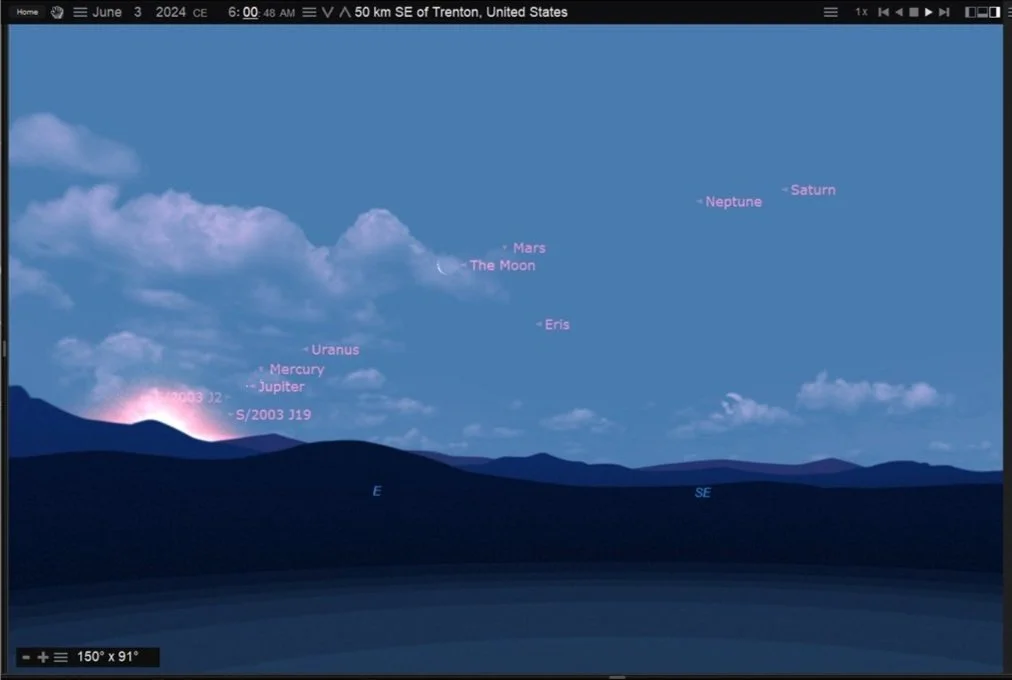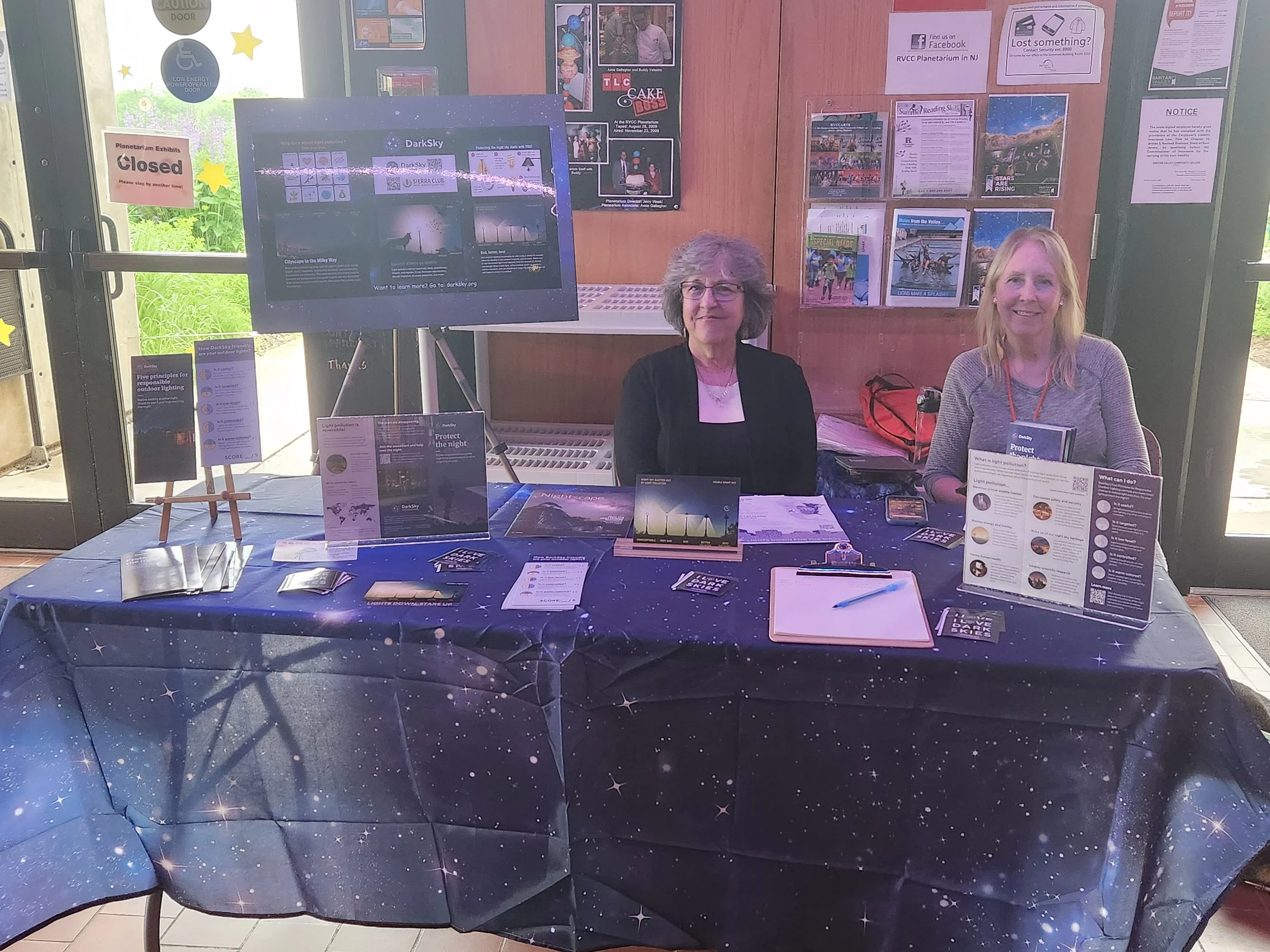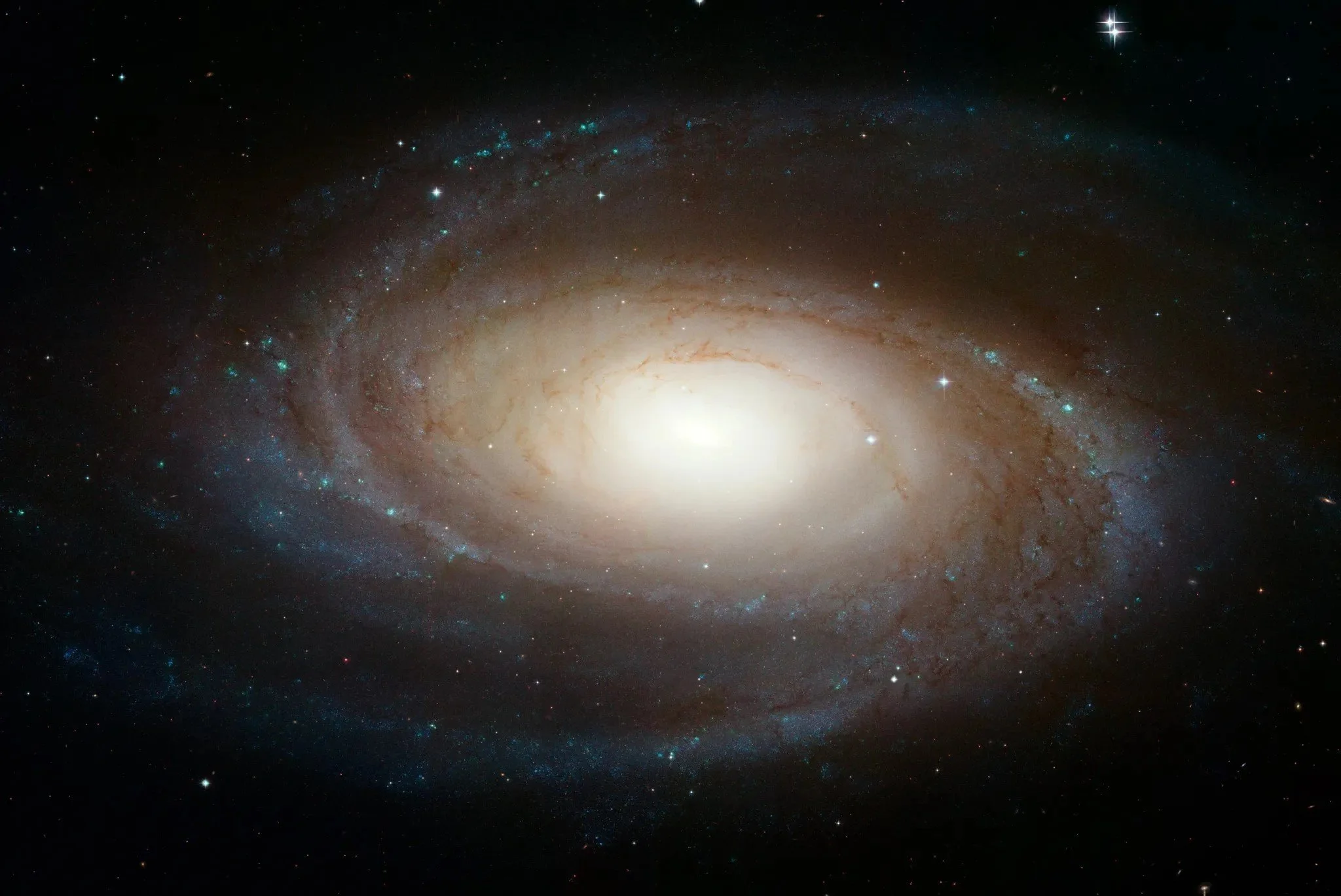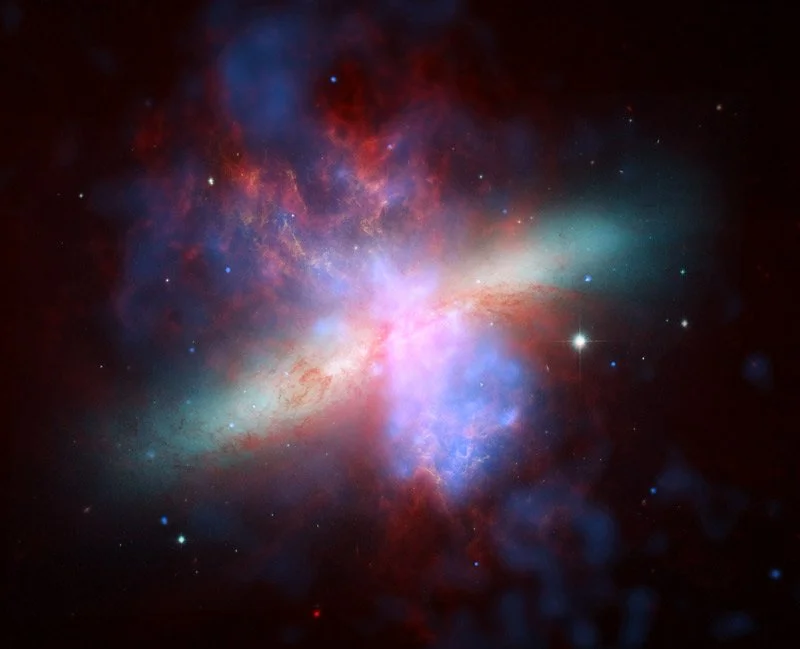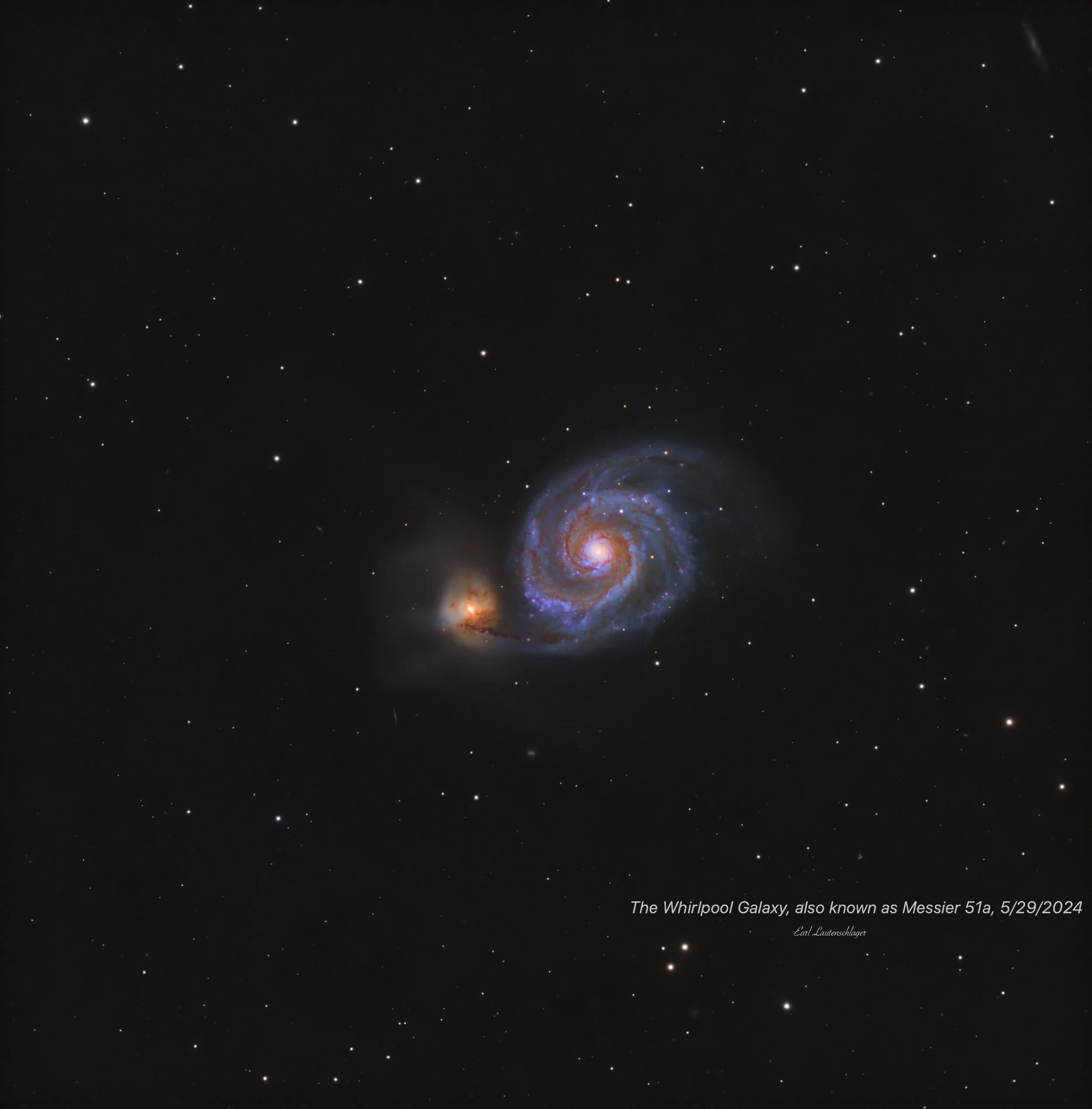Astral Projections Online June 2024
Check our Website for updated content at www.astra-nj.com
Club Presentations Wanted:
Does anyone have any astronomy items of interest to share with the membership?
Please let us know at Club Contacts.
Club dues and membership. If you renew after March 31 you will be renewed as a new member.
ASTRAL PROJECTIONS ONLINE (APO for short) is an email-linked publication for members only. If you exit APO to the club website or other resources you will need to use the emailed link again to get back to it. If you wish to retain a copy please bookmark or refer back to the email. We will make all efforts to post by the first week of the month.
Submissions Welcome: Members are invited to submit articles, photos, news, or stories for inclusion with Astral Projections Online. Please contact the ASTRA Webmaster.
Event Calendar
EVENT Cancellations: Members will receive email notifications of an event cancellation.
Upcoming June ASTRA Meeting
ASTRA's next meeting will be Friday, June 14, 2024, at 7 PM EST. This will be an in-person meeting at Novins Planetarium - Building 13. … Our June meeting will be a club swap meet. Anyone with items they wish to sell is welcome to bring them.
Upcoming Star Parties
Patriot Park (Jackson) - June 1 - 9 PM to 11 PM
Jakes Branch - June 8 - 9 PM to 11 PM
Seaside Park Environmental Committee (IBSP) Area #2 - June 15 - 9 PM to 11 PM
Island Beach State Park Area #2 - June 28 - 9 PM to 11 PM
Jakes Branch - July 6 - 9 PM to 11 PM
Island Beach State Park Area #2 - July 12 - 9 PM to 11 PM
Island Beach State Park Area #2 - July 26 - 9 PM to 11 PM
Cloverdale Farm - Solar Observing - July 27 - 1 PM to 4 PM
Island Beach State Park Area #2 - August 2 - 9 PM to 11 PM
Upcoming Public, County & State Park Presentations 2024
Public Outreach Presentations, if any member wishes to support ASTRA outreach efforts with the public, please let Vinny, Ro, or Jim know of any interest. Additional help for these events is always appreciated.
County and State Park presentations require a registration fee, call the hosting park to reserve.
*** Currently, there are no public presentations from June to August. ***
Website Updates …
Please visit our club website. We continue to have additional updates, if some content would be useful to members please let us know.
“When I was little I wanted to be an astronomer. Now that I saw your presentation, it makes me want to be an astronomer even more”
-Said by a third grader at West Vincent Elementry, PA
To: Jim Webster, Earth Day event, mobile planetarium
June ASTRA Meeting - June 12
Now's the Time to clean out all of those unwanted astronomy items. Our meeting for June will be a swap meet for members to present and sell.
Event Reports
May Star Party
Our May 2024 star parties on May 11 and 18 were canceled due to weather.
May ASTRA Meeting Summary
Our ASTRA meeting in May, we had a remote guest speaker from Sky & Telescope Dr. Diana Hannikaninen. She presented “The History of Radio Astronomy” This was a great presentation and well-received. The new remote setup worked out well and now only needs one laptop and camera/mic. The next part of the evening was a solar eclipse observing summary by Phil Zolner. I believe of all members Phil has the most Solar Eclipse Observing.









County Park Presentations
On May 18, before the weather changed, we had a table set up for Ocean Fun Day at Island Beach State Park. Unfortunately, the day was cut short. Solar observation was not happening due to clouds, then it started to rain.
West Vincent Elementary in PA
A new experience for Jim Webster. My daughter volunteered me to work the Earth Day event at the school she teaches, West Vincent Elementary in PA. Presented circumpolar constellations in a mobile planetarium. There were sixteen 20-minute sessions for 320 students. The highlight of the day was a third-grade girl who came up after one of the afternoon sessions, she said: “When I was little I wanted to be an astronomer. Now that I saw your presentation, it makes me want to be an astronomer even more.” It made the trip to PA well worth it.
Members Submitted Articles & Items
Whatever it is, how you tell your story online can make all the difference.
Classic Telescopes
Celestron C102F
By Matthew Michota
There's a certain magic to owning a classic telescope. Unlike the ever-evolving world of electronics and gadgetry common in more modern scopes, these instruments hold a sense of heritage, carrying the legacy of countless nights spent exploring the night sky. My Celestron C102F, a product of a collaboration between Celestron and Vixen in the mid-80s, is one such treasure.
I am an avid fan of classic Vixen-made telescopes and equipment, an appreciation I will surely share with our fellow ASTRA member and refractor aficionado, Vic Palmeri. After having searched astronomy classifieds for several years, I finally found and purchased this telescope a few days before Christmas in 2023 from a gentleman in Connecticut, and it quickly became one of my favorite telescopes in my collection.
While the optics are absolutely world-class, and the optical tube itself is a beautiful black paint with orange letters, and a classic Celestron color scheme, the main drawback was its focuser. As a rather dated single speed, rack and pinion design, and only able to accept 1.25” accessories, an upgrade was essential in “modernizing” the instrument. Unfortunately the back focus requirement made upgrading difficult.. finding a suitable replacement that allowed proper In-focus travel for 2” eyepieces proved to be quite a challenge..
I was lucky however, to find a replacement in a used and regrettably discontinued, Moonlite Crayford style focuser. This upgrade really allowed this 35-year-old refractor to fit right in with its more modern counterparts.
The Celestron C102F fluorite refractor is a marvel of optical engineering, and it is not the newest telescope out there, I firmly believe it to be one of the finest 4-inch refractors ever made, and after looking through it, it is easy to see why they are so sought after. For me, it represents far more than just a collection of lenses and steel.
It's a portal to the wonders of our night sky, a testament to enduring quality, and a reminder of the simple joy of visual astronomical exploration. It is and will continue to be, one of my most cherished telescopes, and it always brings me joy to share the experience with others.
All images by: Matthew Michota
NOTE: ASTRA members who have or had a classic telescope are welcome to share their instrument with other club members through photos and a story.
What constitutes a classic Telescope? That is a tough question to answer but we can offer these guidelines:
1) Telescopes from 1955 through the 1980s;
2) An instrument that is no longer in production or is an early model of an existing telescope that remains in production; and;
3) A telescope that collectors and enthusiasts seek.
Guidelines are not rigid and can be modified to accommodate submissions. These old classic telescopes lacked the current technology even found in the basic beginner’s telescopes. Without the technology, we had to learn the night sky. Using a classic telescope created a bond between us, the night sky, and the telescope, and was the source of many happy memories.
Contact: Jim Webster, ASTRA President, regarding submissions.
The Moon: Our Nearest Neighbor
Let’s explore some interesting features, facts, or myths about our nearest neighbor, the Moon. Without it, life on Earth would be totally different, if not at all.
Oceanus Procellarum
The Oceans of Storms on the Moon (Oceanus Procellarum) is the only lunar maria or seas to be called an ocean. That’s because it’s the largest maria, stretching more than 1,600 miles (2,500 km) across.
Early theories about this part of the moon suggested it was the site of an ancient asteroid impact. Now scientists studying data from the Grail mission – which orbited the moon in 2011 and 2012 – believe they have found evidence that this region formed not in an asteroid impact, but through processes going on beneath the moon’s surface.
These scientists suggest that a rift valley on the moon lies beneath the dark lava of the Ocean of Storms.
The rifts are buried beneath dark volcanic plains on the near-side of the moon and have been detected only in the gravity data provided by GRAIL. The lava-flooded rift valleys are unlike anything found anywhere else on the moon and may at one time have resembled rift zones on Earth, Mars, and Venus.
The journal Nature published these findings on October 2, 2014. … EarthSky Oct 2014.
Moon viewing guide: What to look for on the lunar surface … space.com
Outreach material below is distributed free for public outreach.
Around The Web
Adirondack Sky Center
Astrophotography Conference
This four-day workshop event is at Little Wolf Pond, Tupper Lake New York. It’s a six to seven-hour drive from Toms River. The price Is very reasonable and if lodging is needed check out cabins at Curtigay Cove. It is a two-minute drive from the Sky Center.
Curtigay Cove cabin rental, speak with Jim Webster.
Space Weather Update
The most famous sunspot in decades just had its name changed. AR3664, which caused the great May 10th superstorm, has been re-numbered AR3697 following a 2-week trip around the farside of the sun.
Go to spaceweather.com dated May 30, 2024
For more on AR3664 from earlier this month. … spaceweatherlive.com … EarthSky.org
There is so much out there on the event that would make this APO for June way to big. It’s best to google it.
Planetary Alignment on June 3
Don’t get overly excited about the planetary alignment for June 3 also known as the Parade of Planets. While this is an eventful thing to be aware of, the timing of it will disappoint if you expect to see it.
You may be able to see Saturn and Mars, along with the crescent Moon, with the naked eye, but you will need a telescope to see Neptune. The rest will be washed out in the pre-dawn sky as the sun rises.
Jim Webster: Starry Night Pro 8
Dark Sky News
Dark Sky New Jersey is a joint venture of Dark Sky International Advocates and Delegates from New Jersey and the New Jersey chapter of the Sierra Club Dark Sky team. If there is an interest in helping, please let Jim Webster know.
On May 18th, some DarkSky New Jersey members participated in Astronomy Day at the Raritan Valley County College. We are getting the message out there in New Jersey as more advocates come on board.
On the lighter side of astronomy …
For more go to NASA Jet Propulsion Laboratory webpage: What’s Up: Skywatching Tips From NASA
This article and images are distributed by NASA Night Sky Network
The Night Sky Network program supports astronomy clubs across the USA dedicated to astronomy outreach.
Visit nightsky.jpl.nasa.gov to find local clubs, events, and more!
Constant Companions: Circumpolar Constellations, Part III
By Kat Troche
In our final installment of the stars around the North Star, we look ahead to the summer months, where depending on your latitude, the items in these circumpolar constellations are nice and high. Today, we’ll discuss Cepheus, Draco, and Ursa Major. These objects can all be spotted with a medium to large-sized telescope under dark skies.
From left to right: Ursa Major, Draco, and Cepheus. Credit: Stellarium Web.
Herschel’s Garnet Star: Mu Cephei is a deep-red hypergiant known as The Garnet Star or Erakis. While the star is not part of the constellation pattern, it sits within the constellation boundary of Cepheus and is more than 1,000 times the size of our Sun. Like its neighbor Delta Cephei, this star is variable but is not a reliable Cepheid variable. Rather, its brightness can vary anywhere between 3.4 to 5.1 in visible magnitude, over the course of 2-12 years.
This composite of data from NASA's Chandra X-ray Observatory and Hubble Space Telescope gives astronomers a new look for NGC 6543, better known as the Cat's Eye nebula. This planetary nebula represents a phase of stellar evolution that our sun may well experience several billion years from now. Credit: X-ray: NASA/CXC/SAO; Optical: NASA/STScI
The Cat’s Eye Nebula: Labeled a planetary nebula, there are no planets to be found at the center of this object. Observations taken with NASA's Chandra X-ray Observatory and Hubble Space Telescopes give astronomers a better understanding of this complex, potential binary star, and how its core ejected enough mass to produce the rings of dust. When searching for this object, look towards the ‘belly’ of Draco with a medium-sized telescope.
Bode’s Galaxy and the Cigar Galaxy: Using the arrow on the star map, look diagonal from the star Dubhe in Ursa Major. There you will find Bode’s Galaxy (Messier 81) and the Cigar Galaxy (Messier 82). Sometimes referred to as Bode’s Nebula, these two galaxies can be spotted with a small to medium-sized telescope.
M81 Bode’s Galaxy
Bode’s Galaxy is a classic spiral shape, similar to our own Milky Way galaxy and our neighbor, Andromeda. The Cigar Galaxy, however, is known as a starburst galaxy type, known to have a high star formation rate and incredible shapes. This image composite from 2006 combines the power of three great observatories: the Hubble Space Telescope imaged hydrogen in orange, and visible light in yellow green; Chandra X-Ray Observatory portrayed X-ray in blue; Spitzer Space Telescope captured infrared light in red.
M82 The Cigar Galaxy.
Credit: NASA, ESA, CXC, and JPL-Caltech
Up next, we celebrate the solstice with our upcoming mid-month article on the Night Sky Network page through NASA's website!
Let’s Explore Space - What’s in the Sky June 2024
M51 - Whirlpool Galaxy
Distance to Earth: 31 million light-years
Constellation: Canes Venatici
Age: 400.3 million years
Coordinates: RA 13h 29m 53s | Dec +47° 11′ 43″
Radius: 30,000 light-years
Stars: 100 billion
Apparent mass: ~160 billion M☉
Image credit: Earl Lautenschlager
Discovered by Charles Messier in 1773, M51 (M51a) is located 31 million light-years from Earth in the constellation Canes Venatici, but is easily found under Alkaid of Ursa Major, Big Dipper handle. It has an apparent magnitude of 8.4 and can be spotted with a small telescope most easily during May. The Whirlpool galaxy’s beautiful face-on view and closeness to Earth allow astronomers to study a classic spiral galaxy’s structure and star-forming processes.
NGC 5195 (also known as Messier 51b or M51b) is a dwarf galaxy that is interacting with the Whirlpool Galaxy (also known as M51a or NGC 5194).
Visible through 10x50 binoculars and finderscopes as a smudge or patch of light, not unlike an out-of-focus star. An 80mm (3.1-inch) telescope reveals a diffuse patch of light with a brighter core, although not much more. When viewed through a 200mm (8-inch) scope, M51 has a well-defined bright core, surrounded by a large, faint diffuse halo. The galaxy's surface appears mottled, with some evidence of faint dark dust lanes and the spiral structure. Satellite galaxy NGC 5195 is also visible, although it's difficult to detect a connection between the two. The true beauty of this galaxy pair is seen in long-exposure images.
Tonight’s Sky: June
Though the nights are shorter in June, they are filled with fine sights. Look for the Hercules constellation, which will lead you to a globular star cluster with hundreds of thousands of densely packed stars. You can also spot Draco the dragon, which will point you to the Cat’s Eye Nebula. Keep watching for space-based views of globular star clusters and the nebula.
Visit the STScI which produces Hubblesite.org video overviews for Tonight’s Sky.
They can be found both on Facebook and stsci.edu.
Submissions Welcome
Members are invited to submit articles, photos, news, or stories for inclusion with Astral Projections Online. Please contact the ASTRA Webmaster.






